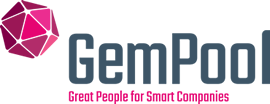
How to Become a Sought-After UX/UI Designer: Skills and Strategies
Posted on:
by Tanisha Barkakaty
IT Jobs and Recruitment Insights
So far into the year 2023, I have seen that the UX/UI design talent market has come to be a rapidly growing field as it plays a crucial role in the success of any digital product. Consequently, in the current digital landscape, the role of UX/UI design has become more crucial than ever before. As users and customers are becoming more sophisticated and demanding, businesses are realising that a well-designed interface can make or break their success. The importance of creating user-friendly and visually appealing interfaces to attract and retain customers has been the common focus for many of my clients in the digital product space. This has consequently led to a high demand for skilled UX/UI designers who can create intuitive and enjoyable experiences for users.
Therefore, if you're interested in pursuing a career in UX/UI design or want to enhance your existing skills, this blog is for you as I have put together all the knowledge and insights you need to become a sought-after UX/UI designer and unlock the secrets of success in this competitive industry.
A brief glimpse into the realm of UX/UI Design
Let’s begin with a quick overview of what UX/UI design means and how the two concepts correlate. So, UI, or user interface, focuses on the visual elements of a digital product, such as colours, typography, and layout. It aims to create a visually appealing and engaging experience for the user. On the other hand, UX, or user experience, focuses on the overall experience of the user when interacting with a digital product. It involves understanding user needs, conducting user research, and designing intuitive and user-friendly interfaces. Thus, UI and UX design work hand in hand to create a seamless and enjoyable user experience.
What qualities and skills are important while seeking a new job?
-
A design principle master

As we know Design Principles serve as the backbone for creating visually appealing and effective UX/UI designs, it is essential for a UX/UI designer, to develop a strong foundation in these principles, as they will guide their decision-making process and help them create designs that are not only aesthetically pleasing but also intuitive and user-friendly. Therefore mastering the Design Principles is the first step to begin your UX/UI designer journey!
-
Well-structured designs and thinking
One key design principle is simplicity. Keeping your designs clean and uncluttered allows users to easily navigate through your interface and find what they are looking for. Another important principle is consistency, ensuring that elements such as colours, typography, and layout remain consistent throughout the entire design.
Again, understanding the principles of hierarchy and visual hierarchy is crucial for guiding users' attention to the most important elements on the screen. This involves using size, colour, and positioning to create a clear visual flow.
-
Experienced professional with the latest tools and tech
Along with these principles, it's also crucial for any UX/UI designer looking to excel in their field to stay up-to-date with the latest tools and software, especially in today's fast-paced digital landscape. As technology continues to evolve, new tools and software are constantly being introduced to streamline the design process and enhance productivity. Mastering the latest design tools, such as Adobe XD, Sketch, and Figma, can greatly improve your efficiency and allow you to create high-quality designs with ease. These tools offer a wide range of features, from prototyping and wireframing to creating interactive mockups, enabling you to bring your design ideas to life.
-
A candidate tuned in to today's market trends

Additionally, staying informed about the latest trends in software can help you stay ahead of the competition and deliver cutting-edge designs. Being familiar with the capabilities of emerging design tools and software will give you a competitive edge and allow you to offer innovative solutions to your clients or employers. The field of design is ever-evolving, and it is crucial to keep up with the changes to stay relevant and ahead of the competition.
One way to stay updated is by regularly reading design blogs, articles, and forums. These resources provide valuable insights, case studies, and discussions on emerging trends and best practices in UX/UI design. Subscribing to newsletters and following influential designers on social media can also provide a steady stream of information.
Another way is attending workshops, webinars, and online courses that can help you develop new skills and stay up to date with new design tools and techniques. Additionally, taking advantage of online platforms that offer tutorials and design challenges can help you refine your skills and expand your portfolio. By proactively seeking opportunities to learn and grow, you can position yourself as a knowledgeable and forward-thinking designer in the eyes of your clients and employers. Building a strong foundation and continuously sharpening your skills will set you apart from others in the industry.
-
A powerhouse portfolio that's diverse and well-crafted
Another important requirement for a UX/UI designer is building a strong portfolio which is essential to showcase your skills and attract potential clients or employers. A portfolio acts as a visual resume, demonstrating your expertise and creativity in designing user-friendly interfaces and seamless user experiences.
When curating your portfolio, it's important to select a diverse range of projects that highlight your versatility as a designer. Include projects that showcase your ability to solve complex problems, collaborate with cross-functional teams, and deliver results that align with business objectives.
Remember to provide context for each project in your portfolio, explaining the challenges you faced, your design process, and the outcomes achieved. This helps potential clients or employers understand your design thinking and the impact of your work.
In addition to showcasing your projects, consider including testimonials or case studies from previous clients or colleagues. This adds credibility and demonstrates your ability to deliver exceptional results.
Having an online portfolio is another crucial thing in today's digital age. Creating a visually appealing and user-friendly website to host your portfolio, makes it easy for visitors to navigate and view your work. I always ask my candidates to update their portfolios regularly with their latest projects and refine them based on feedback or new skills they acquire.
-
A seasoned pro with hands-on experience!
Once you have built a compelling portfolio, the next step is to gain valuable experience through internships and freelance projects especially if you are new in this vertical as this will not only enhance your skills but also provide you with real-world scenarios to work on and deliver solutions.
Internships are a great way to get your foot in the door and gain hands-on experience in the UX/UI design field. Looking for internships at design agencies, tech companies, or startups that align with your interests and career goals is the best way to enter into this vertical. Even if they are unpaid or part-time, the experience you gain will be invaluable.
Freelance projects, on the other hand, allow you to work independently and develop your own client base. This option applies to anyone in this field with or without prior experience. Although, a bit of prior experience will give you the right exposure and credibility to be a freelancer in this field. The best way to begin the freelance journey is by networking with professionals in the industry and offering your services. This will not only help you gain practical experience but also build your reputation as a reliable and skilled UX/UI designer. Again, always remember to document your experiences and showcase them in your portfolio, as they will demonstrate your ability to work in various environments and deliver results.
-
A networking enthusiast

Networking is also a crucial aspect of becoming a sought-after UX/UI designer. It not only allows you to meet potential clients, employers, and collaborators but also enables you to stay in the loop about industry trends and advancements. Building connections with industry professionals can open doors to exciting opportunities and help you grow your career.
One way to network is by attending design conferences and industry events. These gatherings bring together experts, thought leaders, and enthusiasts in the UX/UI design field. By participating in these events, you can gain insights from experienced professionals, learn new techniques, and stay updated with the latest design trends. Additionally, try to leverage the online platforms and communities dedicated to UX/UI design. Participating in discussions, sharing your work, and seeking advice from fellow designers can not only expand your knowledge but also establish valuable connections within the industry.
-
A communication champ and collaboration expert!
In addition to mastering the technical skills of UX/UI design, another key aspect of becoming a sought-after designer is honing your communication and collaboration skills. Design is a collaborative field, often requiring close collaboration with clients, developers, and other stakeholders.
Effective communication is essential for understanding client requirements, articulating design ideas, and incorporating feedback. Clear and concise communication ensures that everyone involved is on the same page and working towards a shared vision. It also helps to build trust and establish strong relationships with clients and colleagues.
It is also very important to understand how ‘Collaboration’ is crucial for successful design projects. Working closely with developers and other team members enables you to bring your designs to life, align the design with technical constraints, and create a seamless user experience. Building strong relationships with your collaborators fosters a productive and harmonious working environment.
To improve your communication and collaboration skills, practise active listening, ask clarifying questions, and be open to feedback. Develop empathy and adaptability to work effectively with diverse individuals and teams. Explore tools and techniques that facilitate collaboration, such as prototyping tools and project management platforms.By sharpening your communication and collaboration skills, you not only enhance your design process but also demonstrate your ability to work effectively in a team, making you an invaluable asset to any project.
-
Curious mind
Lastly, nurture your curiosity. Ask questions, seek feedback, and constantly strive to improve. Adopt a growth mindset and view every project as a learning opportunity. Embrace feedback, both positive and constructive, and use it to refine your skills and improve your work. By constantly evolving and staying ahead of the curve, you will not only sustain your success but also position yourself as a thought leader and innovator in the field.
By following these tips and staying persistent, you can position yourself as a standout candidate and increase your chances of landing your dream job as a sought-after UX/UI designer. Don't be afraid to experiment and push boundaries. Successful UX/UI designers think outside the box and are not afraid to challenge conventions. Embrace experimentation and creativity to deliver unique and innovative solutions to design problems. It is important to remember that becoming a sought-after UX/UI designer is not an overnight process. It requires continuous learning, dedication, and a passion for creating exceptional user experiences. Embrace the journey and enjoy every step along the way.
As you venture further into your career as a UX/UI Designer, always remember to prioritize the user. Understand their needs, desires, and pain points. By putting the user at the heart of your designs, you will be able to create impactful experiences that resonate with your audience. Foster strong relationships with your clients and stakeholders. Collaborate, communicate, and build trust. By understanding their goals and objectives, you will be able to deliver designs that not only meet their needs but also exceed their expectations. And never stop learning. The UX/UI field is constantly evolving, so stay curious, stay hungry, and invest in your professional development.
Now that you have the ultimate guide to becoming a sought-after UX/UI designer, it's time to take action and embark on your journey. Believe in yourself, stay motivated, and always strive for excellence. The world of UX/UI design is waiting for you to make your mark. For starters, check out GemPool’s UX UI Designer’s Job Search Toolkit and if you would like more insight into building portfolios, we have another excellent guide for you- What do IT Recruiters Look for in a Design Portfolio?.






